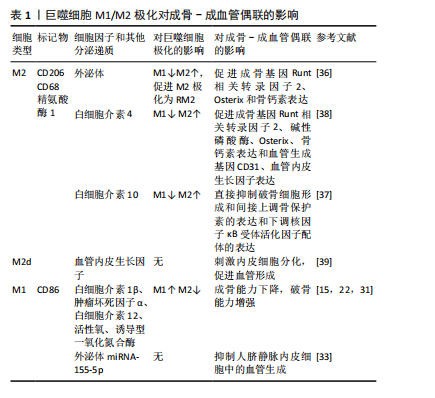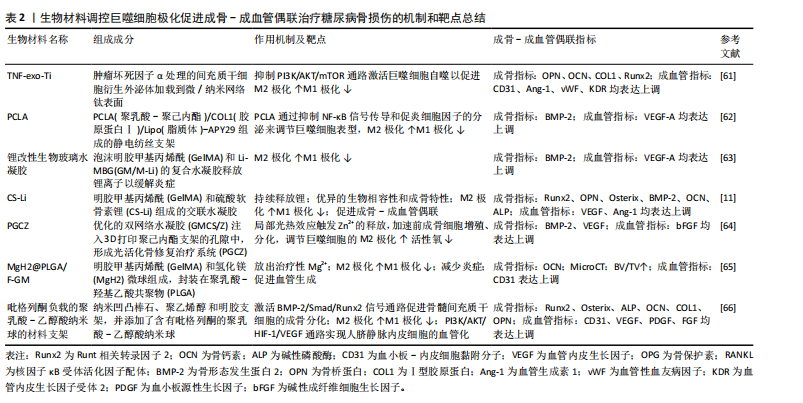[1] KUMAR S, BEHL T, SACHDEVA M, et al. Implicating the effect of ketogenic diet as a preventive measure to obesity and diabetes mellitus. Life Sci. 2021;264:118661.
[2] MOHSIN S, BANIYAS MM, ALDARMAKI RS, et al. An update on therapies for the treatment of diabetes-induced osteoporosis. Expert Opin Biol Ther. 2019;19(9):937-948.
[3] Orthogeriatrics: The Management of Older Patients with Fragility Fractures, Second Edition. Med Sci Sports Exerc. 2022;54(3):536.
[4] HOFBAUER LC, BUSSE B, EASTELL R, et al. Bone fragility in diabetes: novel concepts and clinical implications. Lancet Diabetes Endocrinol. 2022;10(3):207-220.
[5] ZHANG E, MIRAMINI S, ZHANG L. The impact of osteoporosis and diabetes on fracture healing under different loading conditions. Comput Methods Programs Biomed. 2024;244:107952.
[6] SELLMEYER DE, CIVITELLI R, HOFBAUER LC, et al. Skeletal Metabolism, Fracture Risk, and Fracture Outcomes in Type 1 and Type 2 Diabetes. Diabetes. 2016;65(7):1757-1766.
[7] CHATTERJEE S, KHUNTI K, DAVIES MJ. Type 2 diabetes. Lancet. 2017; 389(10085):2239-2251.
[8] STARUP-LINDE J, HYGUM K, LANGDAHL BL. Skeletal Fragility in Type 2 Diabetes Mellitus. Endocrinol Metab (Seoul). 2018;33(3):339-351.
[9] KUSUMBE AP, RAMASAMY SK, ADAMS RH. Coupling of angiogenesis and osteogenesis by a specific vessel subtype in bone. Nature. 2014; 507(7492):323-328.
[10] JIAO H, XIAO E, GRAVES DT. Diabetes and Its Effect on Bone and Fracture Healing. Curr Osteoporos Rep. 2015;13(5):327-335.
[11] XU C, LI W, MAO J, et al. Using chondroitin sulfate lithium hydrogel for diabetic bone regeneration via regulation of macrophage polarization. Carbohydr Polym. 2025;347:122787.
[12] ABE C, BHASWANT M, MIYAZAWA T, et al. The Potential Use of Exosomes in Anti-Cancer Effect Induced by Polarized Macrophages. Pharmaceutics. 2023;15(3):1024.
[13] ATRI C, GUERFALI FZ, LAOUINI D. Role of Human Macrophage Polarization in Inflammation during Infectious Diseases. Int J Mol Sci. 2018;19(6):1801.
[14] WILLENBORG S, SANIN DE, JAIS A, et al. Mitochondrial metabolism coordinates stage-specific repair processes in macrophages during wound healing. Cell Metab. 2021;33(12):2398-2414.e9.
[15] ZHANG B, YANG Y, YI J, et al. Hyperglycemia modulates M1/M2 macrophage polarization via reactive oxygen species overproduction in ligature-induced periodontitis. J Periodontal Res. 2021;56(5):991-1005.
[16] MICHALSKI MN, MCCAULEY LK. Macrophages and skeletal health. Pharmacol Ther. 2017;174:43-54.
[17] TIAN P, ZHAO L, KIM J, et al. Dual stimulus responsive borosilicate glass (BSG) scaffolds promote diabetic alveolar bone defectsrepair by modulating macrophage phenotype. Bioact Mater. 2023;26:231-248.
[18] WANG W, WANG Q, LI W, et al. Targeting APJ drives BNIP3-PINK1-PARKIN induced mitophagy and improves systemic inflammatory bone loss. J Adv Res. 2024. doi: 10.1016/j.jare.2024.12.033.
[19] TWARDA-CLAPA A, OLCZAK A, BIAŁKOWSKA AM, et al. Advanced Glycation End-Products (AGEs): Formation, Chemistry, Classification, Receptors, and Diseases Related to AGEs. Cells. 2022;11(8):1312.
[20] KANAZAWA I, SUGIMOTO T. Diabetes Mellitus-induced Bone Fragility. Intern Med. 2018;57(19):2773-2785.
[21] PARK SY, CHOI KH, JUN JE, et al. Effects of Advanced Glycation End Products on Differentiation and Function of Osteoblasts and Osteoclasts. J Korean Med Sci. 2021;36(37):e239.
[22] TAN H, XU W, DING X, et al. Notch/NICD/RBP-J signaling axis regulates M1 polarization of macrophages mediated by advanced glycation end products. Glycoconj J. 2022;39(4):487-497.
[23] YANG Y, LI R, WANG P, et al. Osteoking prevents bone loss and enhances osteoblastic bone formation by modulating the AGEs/IGF-1/β-catenin/OPG pathway in type 2 diabetic db/db mice. Cell Biol Int. 2024;48(10):1507-1519.
[24] DOU C, DING N, ZHAO C, et al. Estrogen Deficiency-Mediated M2 Macrophage Osteoclastogenesis Contributes to M1/M2 Ratio Alteration in Ovariectomized Osteoporotic Mice. J Bone Miner Res. 2018;33(5):899-908.
[25] RAMASAMY SK. Structure and Functions of Blood Vessels and Vascular Niches in Bone. Stem Cells Int. 2017;2017:5046953.
[26] GROSSO A, BURGER MG, LUNGER A, et al. It Takes Two to Tango: Coupling of Angiogenesis and Osteogenesis for Bone Regeneration. Front Bioeng Biotechnol. 2017;5:68.
[27] SARAN U, GEMINI PIPERNI S, CHATTERJEE S. Role of angiogenesis in bone repair. Arch Biochem Biophys. 2014;561:109-117.
[28] PENG Y, WU S, LI Y, et al. Type H blood vessels in bone modeling and remodeling. Theranostics. 2020;10(1):426-436.
[29] LIN X, XU F, ZHANG KW, et al. Acacetin Prevents Bone Loss by Disrupting Osteoclast Formation and Promoting Type H Vessel Formation in Ovariectomy-Induced Osteoporosis. Front Cell Dev Biol. 2022;10:796227.
[30] LU J, HU D, MA C, et al. Modified Qing’ e Pills exerts anti-osteoporosis effects and prevents bone loss by enhancing type H blood vessel formation. Front Endocrinol (Lausanne). 2022;13:998971.
[31] CHEN M, LIN W, YE R, et al. PPARβ/δ Agonist Alleviates Diabetic Osteoporosis via Regulating M1/M2 Macrophage Polarization. Front Cell Dev Biol. 2021;9:753194.
[32] HUANG Y, HE B, WANG L, et al. Bone marrow mesenchymal stem cell-derived exosomes promote rotator cuff tendon-bone healing by promoting angiogenesis and regulating M1 macrophages in rats. Stem Cell Res Ther. 2020;11(1):496.
[33] LOU R, CHEN J, ZHOU F, et al. Exosomal miRNA-155-5p from M1-polarized macrophages suppresses angiogenesis by targeting GDF6 to interrupt diabetic wound healing. Mol Ther Nucleic Acids. 2023;34:102074.
[34] LI Z, WANG Y, LI S, et al. Exosomes Derived From M2 Macrophages Facilitate Osteogenesis and Reduce Adipogenesis of BMSCs. Front Endocrinol (Lausanne). 2021;12:680328.
[35] YING W, GAO H, DOS REIS FCG, et al. MiR-690, an exosomal-derived miRNA from M2-polarized macrophages, improves insulin sensitivity in obese mice. Cell Metab. 2021;33(4):781-790.e5.
[36] WANG Y, LIN Q, ZHANG H, et al. M2 macrophage-derived exosomes promote diabetic fracture healing by acting as an immunomodulator. Bioact Mater. 2023;28:273-283.
[37] ZHU Z, CHEN G, YU S, et al. Circadian clock disruption stimulates bone loss via regulatory T cell-Mediated regulation of IL-10 expression. Int Immunopharmacol. 2024;139:112589.
[38] SHEN X, SHEN X, LI B, et al. Abnormal macrophage polarization impedes the healing of diabetes-associated tooth sockets. Bone. 2021; 143:115618.
[39] SHAPOURI-MOGHADDAM A, MOHAMMADIAN S, VAZINI H, et al. Macrophage plasticity, polarization, and function in health and disease. J Cell Physiol. 2018;233(9):6425-6440.
[40] ZHANG D, WANG Y, ZHOU Z, et al. Role of miRNA-regulated type H vessel formation in osteoporosis. Front Endocrinol (Lausanne). 2024; 15:1394785.
[41] HU K, OLSEN BR. Osteoblast-derived VEGF regulates osteoblast differentiation and bone formation during bone repair. J Clin Invest. 2016;126(2):509-526.
[42] LIU X, GUO Q, WANG L, et al. Metformin attenuates high-fat diet induced metabolic syndrome related osteoarthritis through inhibition of prostaglandins. Front Cell Dev Biol. 2023;11:1184524.
[43] SHEN M, YU H, JIN Y, et al. Metformin Facilitates Osteoblastic Differentiation and M2 Macrophage Polarization by PI3K/AKT/mTOR Pathway in Human Umbilical Cord Mesenchymal Stem Cells. Stem Cells Int. 2022;2022:9498876.
[44] FAN S, ZHANG C, SUN X, et al. Metformin enhances osteogenic differentiation of BMSC by modulating macrophage M2 polarization. Sci Rep. 2024;14(1):20267.
[45] RUAN Z, YIN H, WAN TF, et al. Metformin accelerates bone fracture healing by promoting type H vessel formation through inhibition of YAP1/TAZ expression. Bone Res. 2023;11(1):45.
[46] ISHIDA M, SHEN WR, KIMURA K, et al. DPP-4 inhibitor impedes lipopolysaccharide-induced osteoclast formation and bone resorption in vivo. Biomed Pharmacother. 2019;109:242-253.
[47] QUADROS-PEREIRA L, NERY-NETO JAO, DA SILVA EM, et al. Treatment with sitagliptin exacerbates the M2 phenotype in macrophages in vitro. Int Immunopharmacol. 2025;145:113730.
[48] XIANG G, HUANG X, WANG T, et al. The impact of sitagliptin on macrophage polarity and angiogenesis in the osteointegration of titanium implants in type 2 diabetes. Biomed Pharmacother. 2020; 126:110078.
[49] HE J, ZHAO D, PENG B, et al. A novel mechanism of Vildagliptin in regulating bone metabolism and mitigating osteoporosis. Int Immunopharmacol. 2024;130:111671.
[50] LU Y, LIU S, YANG P, et al. Exendin-4 and eldecalcitol synergistically promote osteogenic differentiation of bone marrow mesenchymal stem cells through M2 macrophages polarization via PI3K/AKT pathway. Stem Cell Res Ther. 2022;13(1):113.
[51] HE Y, SONG W, DENG Y, et al. Liraglutide promotes osteogenic differentiation of mesenchymal stem cells by inhibiting M1 macrophage polarization and CXCL9 release in vitro. Mol Cell Endocrinol. 2025;597: 112441.
[52] JENSEN PR, ANDERSEN TL, CHAVASSIEUX P, et al. Bisphosphonates impair the onset of bone formation at remodeling sites. Bone. 2021; 145:115850.
[53] CUI M, YU LZ, ZHANG N, et al. Zoledronic Acid Improves Bone Quality in the Streptozotocin-Induced Diabetes Rat through Affecting the Expression of the Osteoblast-Regulating Transcription Factors. Exp Clin Endocrinol Diabetes. 2019;127(1):68-75.
[54] OTTO M, WEIGEL J, ZIEBART T, et al. Significance of bisphosphonates on angiogenesis in vivo and their effect under geranyl-geraniol addition - could it alter the treatment of bisphosphonate-associated necrosis of the jaw? Oral Maxillofac Surg. 2023;27(2):263-268.
[55] REYES C, HITZ M, PRIETO-ALHAMBRA D, et al. Risks and Benefits of Bisphosphonate Therapies. J Cell Biochem. 2016;117(1):20-28.
[56] SHEN X, ZHU W, ZHANG P, et al. Macrophage miR-149-5p induction is a key driver and therapeutic target for BRONJ. JCI Insight. 2022; 7(16):e159865.
[57] RUGGIERO SL, DODSON TB, FANTASIA J, et al. American Association of Oral and Maxillofacial Surgeons position paper on medication-related osteonecrosis of the jaw--2014 update. J Oral Maxillofac Surg. 2014;72(10):1938-1956.
[58] PASCHALIDI P, GKOUVERIS I, SOUNDIA A, et al. The role of M1 and M2 macrophage polarization in progression of medication-related osteonecrosis of the jaw. Clin Oral Investig. 2021;25(5):2845-2857.
[59] HUANG X, CHEN M, WU H, et al. Macrophage Polarization Mediated by Chitooligosaccharide (COS) and Associated Osteogenic and Angiogenic Activities. ACS Biomater Sci Eng. 2020;6(3):1614-1629.
[60] GENG K, MA X, JIANG Z, et al. WDR74 facilitates TGF-β/Smad pathway activation to promote M2 macrophage polarization and diabetic foot ulcer wound healing in mice. Cell Biol Toxicol. 2023;39(4):1577-1591.
[61] YANG Y, WANG J, LIN X, et al. TNF-α-licensed exosome-integrated titaniumaccelerated T2D osseointegration by promoting autophagy-regulated M2 macrophage polarization. Biochem Biophys Res Commun. 2024;727:150316.
[62] QIAO Y, YU L, YANG P, et al. Spatiotemporal Immunomodulation and Biphasic Osteo-Vascular Aligned Electrospun Membrane for Diabetic Periosteum Regeneration. Adv Sci (Weinh). 2023;10(36):e2302874.
[63] WU Z, BAI J, GE G, et al. Regulating Macrophage Polarization in High Glucose Microenvironment Using Lithium-Modified Bioglass-Hydrogel for Diabetic Bone Regeneration. Adv Healthc Mater. 2022;11(13): e2200298.
[64] WU M, LIU H, ZHU Y, et al. Bioinspired soft-hard combined system with mild photothermal therapeutic activity promotes diabetic bone defect healing via synergetic effects of immune activation and angiogenesis. Theranostics. 2024;14(10):4014-4057.
[65] PEI M, LI P, GUO X, et al. Sustained Release of Hydrogen and Magnesium Ions Mediated by a Foamed Gelatin-Methacryloyl Hydrogel for the Repair of Bone Defects in Diabetes. ACS Biomater Sci Eng. 2024;10(7):4411-4424.
[66] FAN S, TAN Y, YUAN X, et al. Regulation of the immune microenvironment by pioglitazone-loaded polylactic glycolic acid nanosphere composite scaffolds to promote vascularization and bone regeneration. J Tissue Eng. 2024;15:20417314241231452.
[67] 国家药典委员会编.中华人民共和国药典一部2020年版[M].北京:中国医药科技出版社,2020.
[68] 彭剑岚,朱永苹,林寿宁,等.黄芪及其活性成分治疗胃癌的作用机制研究进展[J].中华中医药学刊,2023,41(4):196-201.
[69] ZHANG Y, CHEN Z, CHEN L, et al. Astragali radix (Huangqi): a time-honored nourishing herbal medicine. Chin Med. 2024;19(1):119.
[70] 刘凯雯,郭成龙,张晓刚,等.黄芪有效成分治疗骨质疏松症相关信号通路的研究进展[J].中国骨质疏松杂志,2024,30(10):1487-1492.
[71] TU S, SHAO A, REN L, et al. Angiogenesis effect of Astragalus polysaccharide combined with endothelial progenitor cells therapy in diabetic male rat following experimental hind limb ischemia. Chin Med J (Engl). 2014;127(11):2121-2128.
[72] HAN R, TANG F, LU M, et al. Astragalus polysaccharide ameliorates H2O2-induced human umbilical vein endothelial cell injury. Mol Med Rep. 2017;15(6):4027-4034.
[73] SHA W, ZHAO B, WEI H, et al. Astragalus polysaccharide ameliorates vascular endothelial dysfunction by stimulating macrophage M2 polarization via potentiating Nrf2/HO-1 signaling pathway. Phytomedicine. 2023;112:154667.
[74] WANG F, QIAN H, KONG L, et al. Accelerated Bone Regeneration by Astragaloside IV through Stimulating the Coupling of Osteogenesis and Angiogenesis. Int J Biol Sci. 2021;17(7):1821-1836.
[75] HE Y, ZHAO Y, LV RJ, et al. Curcumin activates the Wnt/β-catenin signaling pathway to alleviate hippocampal neurogenesis abnormalities caused by intermittent hypoxia: A study based on network pharmacology and experimental verification. Int Immunopharmacol. 2024;143(Pt 1):113299.
[76] FAN D, LU J, YU N, et al. Curcumin Prevents Diabetic Osteoporosis through Promoting Osteogenesis and Angiogenesis Coupling via NF-κB Signaling. Evid Based Complement Alternat Med. 2022;2022:4974343.
[77] CHEN S, LIANG H, JI Y, et al. Curcumin Modulates the Crosstalk Between Macrophages and Bone Mesenchymal Stem Cells to Ameliorate Osteogenesis. Front Cell Dev Biol. 2021;9:634650.
[78] SHEN J, SHEN D, TANG Q, et al. Mogroside V exerts anti-inflammatory effects on fine particulate matter-induced inflammation in porcine alveolar macrophages. Toxicol In Vitro. 2022;80:105326.
[79] LUO Y, YE Z, LI C, et al. Mogroside V Promotes Osteogenic Differentiation of Bone Marrow Mesenchymal Stem Cells from Diabetic Mice by Altering MicroRNA Profiles. Comb Chem High Throughput Screen. 2024. doi: 10.2174/0113862073299904240416114653. |



